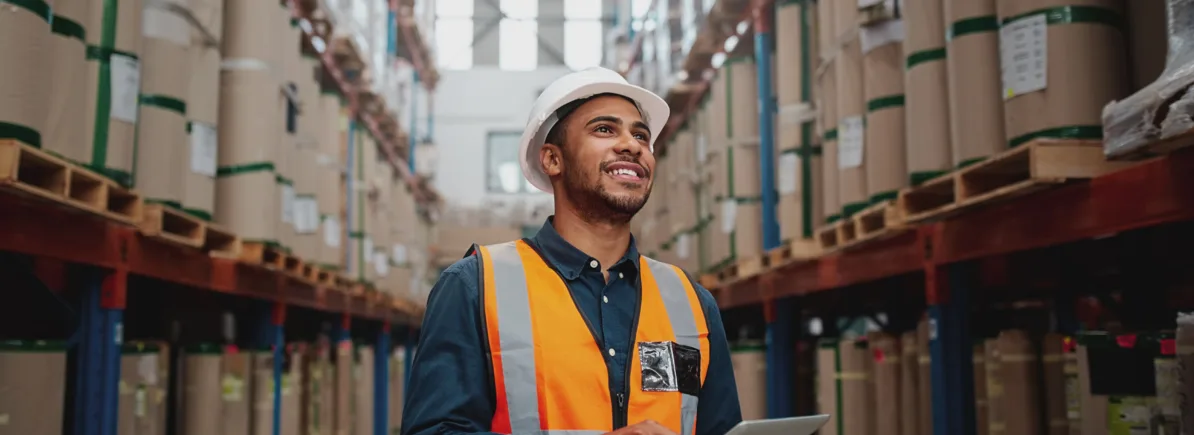8 packing operation resolutions for 2024

With 2023 a distant memory, another year starts with a sense of optimism that encourages new year resolutions… eat less, move more, give up alcohol and be more environmentally conscious.
Resolutions don’t just happen in our personal lives either, it’s a great time to reflect on business performance in 2023 and what improvements you could put in place to make 2024 stronger.
In our experience, a good place to start with workplace resolutions is your packing operation. Changes there can have a positive knock-on effect throughout your business – improving efficiency, reducing cost, maximising transportation, and reducing the carbon footprint of your supply chain.
Here are eight packing operation resolutions to consider for 2024:
- 1.
- 2.
- 3.
- 4.
- 5.
- 6.
- 7.

Create space to grow your business
If you’re fast outgrowing your warehouse or, would like to expand your operation but cannot see the way to do this without moving a new premises, then perhaps a rethink of how you are currently utilising the space may help.
Warehouse space is at a premium and forms a large part of any company overhead, but have you planned that space or, has it just evolved over time to accommodate your operation?
A rethink of your storage space may unlock opportunities to expand production or your packing area. For example, a pallet stored on the floor takes up 1.2sq metres of space, often enough area to install a pack bench.
If your looking at ways to increase your workable space, you may be interested in reading our previous blog “How to unlock warehouse space for your packing operation in 2023”, it’s an oldie but goodie.

Identify opportunities to free up cashflow
Cashflow is king, so why are you paying invoices for bulk quantities of packaging which won’t be used for months? You may get a great price from a manufacturer initially but, packaging doesn’t generate revenue. The cost of storing slow moving stock week after week is cancelling out those procurement savings.
Consider buying little and often from a packaging distributor on a stock and drip contract or JIT. You get the packaging you need, when you need it and, paying for it at point of use.
Removing pallets and pallets of slow-moving packaging stock also contributes to your first resolution of creating more space too!

Boost efficiency with an ergonomic space
Is it time to rethink the layout of your packing operation? There are so many ways you can optimise a workspace to make it more efficient and increase productivity.
Well organised, purpose-built workstations can revolutionise the packing area, reducing the amount of “wandering” around the warehouse to get the right packaging to wrap products being shipped.
They can be customised to hold the packaging you need, including different sized boxes and mailers, protective infill systems, tape dispensers and label printers. With everything you need to hand, your packing area can become a well-oiled machine.
Pack bench height can be adjusted too, allowing you to tailor the station to the comfort of your packers, so they can either sit or stand (don’t forget an anti-fatigue mat too, to reduce the risk of pressure to feet and legs).
Consider a conveyor system interconnecting picking areas, pack stations and goods-out. Creating a seamless link in your packing operation, they can be fixed or mobile, set to the height required for your products, and be as integrated or free standing as you require. For example, you may go with a roller conveyor to start, where you manually push the goods to the next area. For larger more established operations, a belt driven option with light sensor activation and control can be set to automatically direct packaging to multiple locations.

Reduce the amount of packaging material you use
When less packaging is used, you are not only reducing overall waste but business costs too. It’s a win-win situation. This is especially important if you are working towards the new EPR legislation which will affect manufacturers, distributors, and retailers where their product packaging will end up in household waste streams.
A rethink in box size can reduce the amount of material used as well as reducing the need to void fill.
Are there opportunities to re-engineer your packaging material to reduce the weight?
Consider ways to reduce the weight of material you’re using each year too. For example, a switch to a stronger adhesive tape can help to reduce the overall amount you need to apply, removing the need to H tape packs. A stretch wrap review can also unlock opportunities to reduce the amount of material needed to wrap each pallet, often a Macfarlane Packaging Stretch Wrap Review reduces material use by up to 50%.
As well as reducing material use, you will also reduce the cost of your packaging and improve the overall carbon footprint of your business.

Optimise your delivery fleet and courier network
Building on the resolution of using less packaging material, by rethinking your packaging and optimising your pack cubage you may be able to fit more goods onto a pallet or, increase your vehicle payload.
This will drive optimisation of your delivery fleet or reduce courier costs if you’re paying by size or weight of parcels shipped.
By increasing the capacity of your delivery vehicles, you can reduce the amount of vehicles you need to load, combat driver shortages and fluctuating fuel costs.

Combat labour shortages with packaging automation
Labour shortages are a defining feature of the logistics industry, but when you use packaging that’s quick to assemble, pack and wrap, you can increase throughput and manage production spikes more efficiently with the workforce you have in place.
Bringing in a level of packaging automation can also help to support a more efficient operation, reducing menial, repetitive tasks and allowing you to upskill your workforce.
There are packaging automation solutions for every size of business, at a cost to suit every budget too. It doesn’t need to be a huge cap-ex project.
For smaller businesses, you may consider entry level automation, like electronic gummed paper tape dispensers, which cut strips to size ready for speedy application. Or perhaps a void fill dispenser which automatically adds the right amount of protection at the click of a foot pedal.
If you’re wrapping more than 14 pallets per day, consider a stretch wrap machine which efficiently applies film to your pallets, leaving your operators free to take the last pallet to goods out or, bring in the next pallet for wrapping.
Box erectors and sealers can assemble your packs ready for filling, so operators can focus on packing. If you want to “go large” an auto-boxing or bagging machine can be installed to build, fill and seal packs.
Automation can be as integrated as you want to make it, there are options to suit every size of business to reduce the number of touches to a product or pack, reduce manual handling and material use, as well as speed up your operation.

Meet your sustainability targets for 2024
Carbon footprint reduction plays a key part in ESG goals, with larger businesses committed to Mandatory Greenhouse Gas Reporting by the UK Government. The race is on to make better use of natural resources.
Many of the resolutions above will help you to reduce your packaging use, optimise your delivery fleet and cut emissions from the supply chain.
Book a packaging review with Macfarlane Packaging
So, how do the above resolutions sound? Overwhelming when you still have your regular day job to do? Don’t worry, we can do all the above for you with a free of charge, no obligation packaging review!
We come to, walk through your operation to see what your packing, how you’re packing it and then, we suggest some solutions to help you get those resolutions in place.
Look at how Macfarlane Packaging can support your business or, contact us today to book your packaging review.
